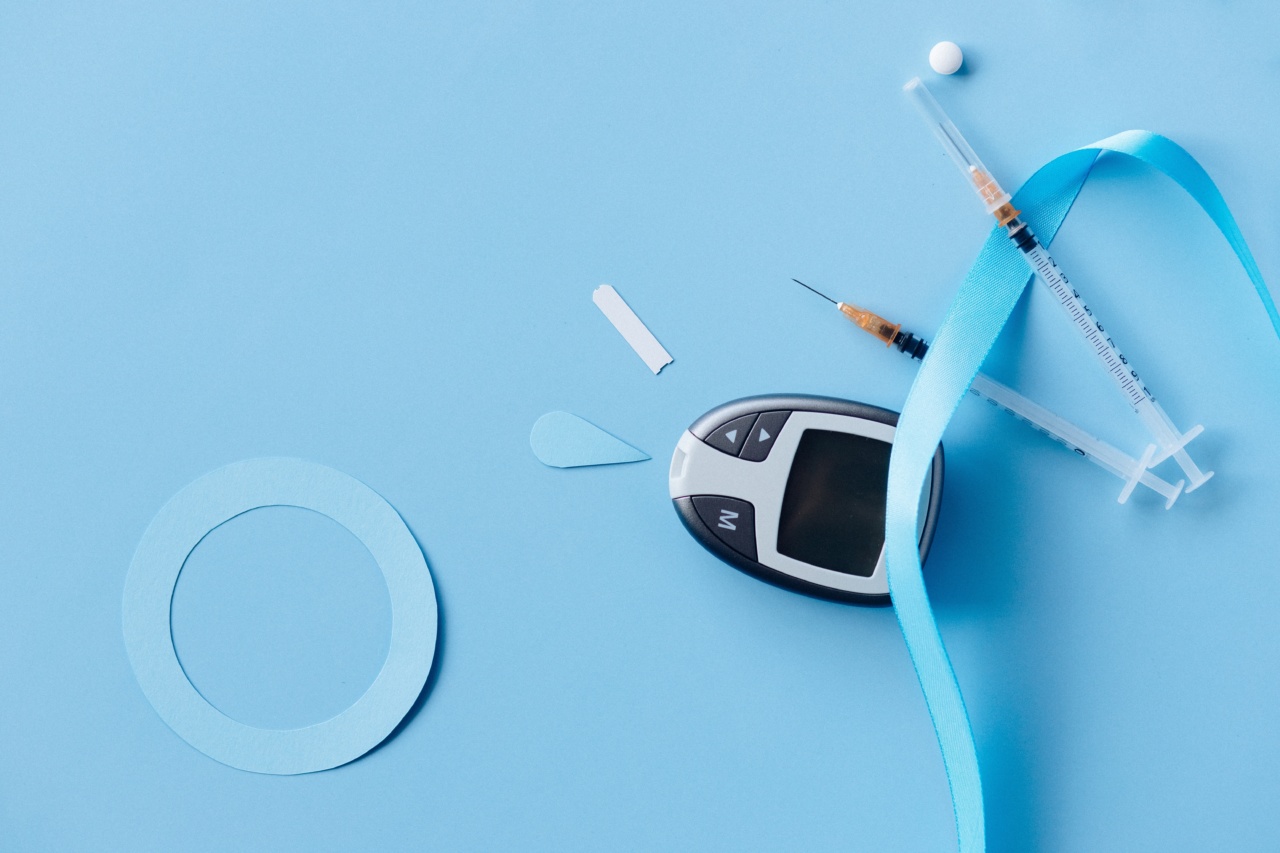Diabetes mellitus is a chronic metabolic disorder characterized by increased levels of glucose in the blood. It is caused by the inability of the pancreas to produce insulin or the inability of the body to use insulin effectively.
If left uncontrolled, diabetes can lead to serious complications such as heart disease, kidney damage, nerve damage, and blindness. Therefore, monitoring glucose levels is crucial in managing diabetes.
Glycated Hemoglobin (HbA1c) Test
The glycated hemoglobin (HbA1c) test is used to measure the average blood glucose level over the past 2-3 months. This test is done by analyzing the percentage of hemoglobin molecules that have glucose attached to them.
The HbA1c test is the gold standard for assessing glycemic control in individuals with diabetes. The American Diabetes Association (ADA) recommends that individuals with diabetes should have the HbA1c test done at least twice a year. Those with well-controlled diabetes can have the test done less frequently.
Fasting Blood Glucose (FBG) Test
The fasting blood glucose (FBG) test is done after an individual has fasted for 8 hours. It measures the level of glucose in the blood at that point in time.
A normal fasting blood glucose level is considered to be between 70 and 99 milligrams per deciliter (mg/dL). An FBG level of 126 mg/dL or higher on two separate occasions indicates diabetes.
Random (Casual) Blood Glucose Test
A random (casual) blood glucose test can be done at any time of the day. It measures the level of glucose in the blood at that point in time. A reading of 200 mg/dL or higher indicates diabetes.
This test is typically done in combination with other glucose tests.
Oral Glucose Tolerance Test (OGTT)
The oral glucose tolerance test (OGTT) is done by measuring the level of glucose in the blood after the individual has consumed a drink containing 75 grams of glucose.
The test is done initially after an overnight fast and then 2 hours after the glucose drink. A normal OGTT result is a fasting blood glucose level of less than 100 mg/dL and a 2-hour blood glucose level of less than 140 mg/dL. A reading of 200 mg/dL or higher after the 2-hour test indicates diabetes.
Continuous Glucose Monitoring (CGM)
Continuous glucose monitoring (CGM) involves inserting a small wire-like sensor under the skin to measure glucose levels in the interstitial fluid every few minutes. This reading is then sent to a receiver that displays the glucose levels in real-time.
CGM is useful for individuals with diabetes who experience hypoglycemia unawareness (unable to sense low blood glucose levels) or have unstable glucose levels. The CGM device can help individuals adjust their insulin dosages or food intake to improve glycemic control.
Self-Monitoring of Blood Glucose (SMBG)
Self-monitoring of blood glucose (SMBG) involves individuals with diabetes measuring their glucose levels at home using a glucose meter.
SMBG is recommended for individuals with diabetes who are on insulin therapy or diabetes medications that can cause hypoglycemia. It is also recommended for individuals with diabetes who are pregnant, have difficulty controlling their glucose levels, have just started insulin therapy, or have had severe hypoglycemia in the past.
The frequency of SMBG testing depends on the individual’s glycemic control.
Fructosamine Test
The fructosamine test measures the level of glucose attached to protein over the past 2-3 weeks.
This test is useful for individuals with diabetes who have conditions that interfere with the HbA1c test, such as hemoglobin disorders or iron-deficiency anemia. It can also be used in pregnant women with diabetes. The fructosamine test is not as reliable as the HbA1c test for assessing long-term glycemic control.
Urine Tests
Urine tests for glucose and ketones are not routinely used to monitor glucose levels in individuals with diabetes.
They are only useful in detecting diabetic ketoacidosis (DKA), a life-threatening condition that occurs when the body produces high levels of ketones due to insulin deficiency. Urine tests for glucose can also be useful in monitoring individuals with diabetes who have kidney disease or have difficulty measuring glucose levels with a blood glucose meter.
Cholesterol and Blood Pressure Tests
Individuals with diabetes are at increased risk of developing cardiovascular disease. Therefore, regular monitoring of cholesterol and blood pressure is important.
A lipid panel (total cholesterol, HDL cholesterol, LDL cholesterol, and triglycerides) should be done at least once a year. Blood pressure should be checked at every follow-up visit with the healthcare provider. The blood pressure target for individuals with diabetes is less than 140/90 mmHg.
Eye and Foot Exams
Individuals with diabetes are at risk of developing eye problems (diabetic retinopathy) and foot problems (diabetic neuropathy). Therefore, regular eye and foot exams should be done to detect any early signs of these conditions.
Eye exams should be done annually, and foot exams should be done at every follow-up visit with the healthcare provider.
Conclusion
Monitoring glucose levels is crucial in managing diabetes. The glycated hemoglobin (HbA1c) test is the gold standard for assessing glycemic control.
Other glucose tests, such as the fasting blood glucose (FBG) test, oral glucose tolerance test (OGTT), and continuous glucose monitoring (CGM), are also useful. Regular monitoring of cholesterol, blood pressure, eye, and foot health is important in preventing complications.
Individualized testing and screening recommendations should be made by the healthcare provider based on the individual’s glycemic control, diabetes medication regimen, and risk factor profile.





























